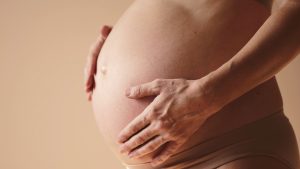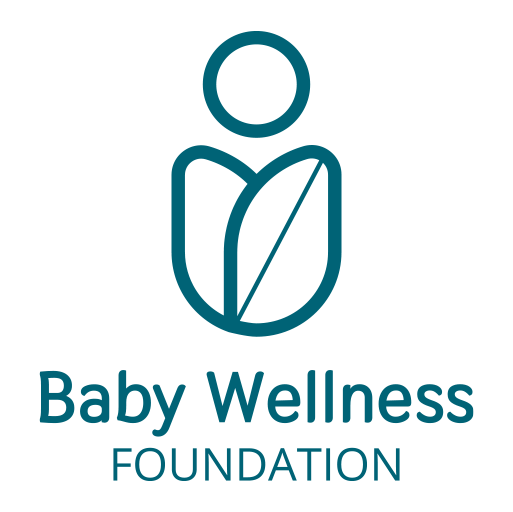Approfondimenti scientifici
The fetus' sensory journey
Prenatal sensory stimulation is a crucial element in the maturation of the central nervous system and in the functional organization of early experiences. Every sense—from touch and hearing to the more complex vestibular and proprioceptive systems—contributes to building a multisensory map that helps orient the fetus within the intrauterine environment. This environment is not a neutral container but an active ecosystem of relationships, stimuli, and responses.

Sequence of Sensory Development
Touch
Touch is the first sensory system to develop during gestation, with responses observable as early as the 7th week. The maturation of somatosensory structures begins in the perioral region and gradually extends to the rest of the body. The intrauterine environment, through constant contact with the amniotic fluid and uterine walls, provides continuous tactile stimuli that play a crucial role in the development of proprioception, body representation, and spatial orientation. These early stimulations contribute to the formation of the first sensory and motor maps at the cortical level (Gallace & Spence, 2020).
Smell
The development of the human olfactory system begins surprisingly early in gestation: major neural structures such as the olfactory bulb and tract form by the 9th week, while olfactory receptors on the nasal mucosa appear between the 11th and 13th weeks. Although the fetus does not breathe air, it can perceive odor molecules carried by the amniotic fluid, which largely reflects the mother’s diet and olfactory environment. By the 24th–26th week, the olfactory system becomes functionally active. From this point on, the fetus can begin “learning” through smells, developing memory traces that will influence its olfactory preferences after birth. Studies show that newborns display preferences for smells experienced in utero, such as amniotic fluid and breast milk, suggesting early olfactory memory. Moreover, early activation of the olfactory system contributes to the maturation of limbic connections, highlighting a direct link between sensory perception, emotional regulation, and attachment formation (Farnetani, 2020).
Taste
The development of the gustatory system begins early in gestation, with taste buds forming as early as the 7th–8th week. Taste buds, located primarily on the tongue but also in the soft palate, pharynx, and epiglottis, start to mature in the following weeks, becoming functionally active around the 20th week. By the fifth month of pregnancy, the fetus can activate the taste system, showing physiological and behavioral responses to different taste qualities such as sweet, salty, bitter, and sour. These responses are observable through swallowing patterns and fetal facial expressions detected via 4D ultrasound. Taste molecules ingested by the mother and transferred into the amniotic fluid influence the prenatal sensory environment, contributing to postnatal food preferences. This early exposure is a form of sensory learning that can shape feeding behavior during infancy (Ventura & Worobey, 2020).
Hearing
Hearing is one of the most studied senses during the fetal stage. Between the 25th and 28th weeks, the fetus is capable of perceiving and distinguishing sounds of both endogenous origin (such as the mother’s heartbeat or digestive noises) and exogenous origin (voices, music, environmental sounds). Research has shown that the maternal voice, in particular, has a calming effect measurable through the fetal heart rate, suggesting an early form of learning and recognition. This prenatal auditory capacity is essential for the development of neural connections in brain areas responsible for processing language and emotion, preparing the newborn for postnatal communication (Partanen et al., 2021).
Sight
Sight is the least stimulated sense in utero due to the low brightness of the intrauterine environment. However, as early as the 28th week, the fetus can perceive light variations through the abdominal wall. Even these minimal visual stimuli contribute to the maturation of the retina and the formation of central visual pathways. Neurobiological studies show that exposure to intermittent light stimuli promotes the differentiation of retinal ganglion cells and synaptic plasticity in cortical visual areas. Such stimuli are essential for the topographic organization of the visual cortex, preparing the newborn for visual processing after birth (Righetti, 2020).
Motor sctivity and response to stimuli
Fetal motor activity evolves from reflex movements to more complex, goal-directed sequences, often in response to sensory stimuli. By the 16th week, differentiated postures, coordinated limb movements, and orienting responses can be observed. The bodily experience at this stage is deeply integrated with sensory stimulation: touching the uterine walls, feeling the sway of amniotic fluid, and responding to sounds all foster nervous system maturation (DiPietro et al., 2015).
Soldera’s model (2020) pays special attention to fetal postural organization, considering it an early expression of integrated neurofunctional activity. Fetal movements are not merely motor outputs—they reflect the functional state of the central nervous system, directly influenced by the quality and quantity of stimuli received.
Emotional and relational aspects of intrauterine stimulation
Beyond neurobiological effects, prenatal sensory stimulation holds important relational and emotional significance. Interactions between mother and fetus can be fostered through simple practices such as abdominal caresses, affectionate vocalizations, shared music listening, and visualization techniques. These experiences promote the formation of prenatal bonding, now recognized as key for fetal emotional regulation and the development of the mother-child relationship.
The fetus can process this information as reassuring and familiar signals. Rhythmic repetition of words or sounds can regulate vagal tone, promoting calm and physiological stability (Fifer et al., 2010). In this sense, prenatal stimulation is not only preparation for extrauterine life—it is a truly affective experience, filled with early meaning that will influence postnatal behavior.
DiPietro, J. A., Costigan, K. A., & Voegtline, K. M. (2015). Studies in fetal behavior: Revisited, renewed, and reimagined. Monographs of the Society for Research in Child Development.
Farnetani, I. (2020). Lo sviluppo olfattivo del feto e del neonato. Pediatria Preventiva.
Fifer, W. P., Moon, C. M., & Standley, K. (2010). Prenatal learning and memory. In M. L. Johnson & Y. Munakata (Eds.), Processes of Change in Brain and Cognitive Development.
Gallace, A., & Spence, C. (2020). Sensational developments in somatosensory development? Neuroscience & Biobehavioral Reviews.
Kovács, Á. M., Téglás, E., & Endress, A. D. (2010). The social sense: Susceptibility to others’ beliefs in human infants and adults. Science.
Partanen, E., Kujala, T., Näätänen, R., Liitola, A., & Huotilainen, M. (2013). Learning-induced neural plasticity of speech processing before birth. Proceedings of the National Academy of Sciences.
Partanen, J., Laitinen, K., & Isolauri, E. (2021). Prenatal and early postnatal nutrition and development of taste preferences. Nutrients.
Righetti, P. L. (2020). Le emozioni della vita prenatale. Macro Edizioni.
Soldera, G. (2020). Il comportamento posturale del feto e lo sviluppo sensomotorio prenatale. In G. Soldera & R. Polastri (Eds.), Sviluppo motorio e neuropsicologia perinatale. Edizioni Scientifiche Italiane.
Ventura, A. K., & Worobey, J. (2020). Early influences on the development of food preferences. Current Biology.
